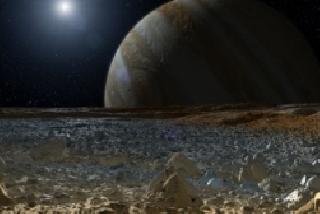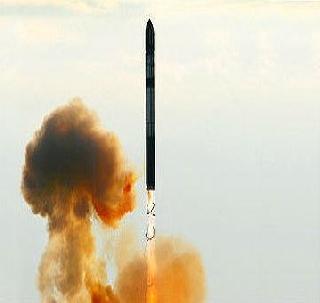
Artist's concept shows a simulated view from the surface of Jupiter's moon Europa. The giant planet Jupiter looms over the horizon. Photo: NASA/JPL-Caltech
WASHINGTON (PTI): NASA is planning to send a daring robotic mission by 2025 to Jupiter's watery moon Europa - one of the best bets for alien life beyond Earth in our solar system.
The American space agency has set aside USD 15 million in its 2015 budget proposal to start planning a mission to Europa.
NASA's chief financial officer, Elizabeth Robinson, was quoted by 'The Times' as saying that the Europa mission would be launched in the mid-2020s.
Laurie Leshin, astronomer at the Rensselaer Polytechnic Institute in New York, said it would be "a daring mission to an extremely compelling object in our solar system."
It is the first time the White House has mentioned a Europa mission in its budget, according to Wired.com.
"Clearly this is a statement by NASA that they recognise the priority and excitement of Europa exploration," commented geologist Robert Pappalardo from NASA's Propulsion Laboratory (JPL).
Europa is one of the solar system's most mysterious moons. There may be a vast ocean beneath Europa's icy crust, with more water in it than exists on all of Earth.
A little bit of that water may be erupting from geysers near the Europa's south pole, sending plumes 200 kilometres into the air, a recent study has found.
Scientists can send a spacecraft flying through these jets in order to sample their composition.
"I would not be overly optimistic until I see the words, 'We want to go to Europa'" from the administration, said planetary scientist Alyssa Rhoden of NASA's Goddard Spaceflight Center.
Robinson said NASA will look at many competing ideas for a Europa mission, so the agency does not yet know how big or how much it will cost.
 Previous Article
Previous Article Next Article
Next Article












The Indian Air Force, in its flight trials evaluation report submitted before the Defence Ministry l..
view articleAn insight into the Medium Multi-Role Combat Aircraft competition...
view articleSky enthusiasts can now spot the International Space Station (ISS) commanded by Indian-American astr..
view article